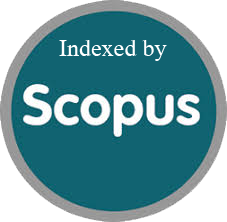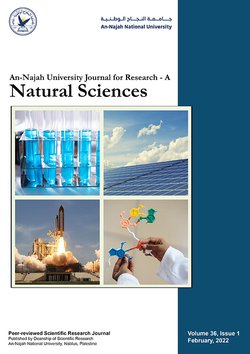H+ - O+ Coulomb Collision Frequency in the Polar Wind Plasma
Article info
2003-03-11
2003-12-09
2003-12-09
1 - 12
Keywords
Abstract
The polar wind is an ambipolar plasma outflow from the terrestrial ionosphere at high latitudes. As the ions drift upward along geomagnetic flux tubes, they move from collision-dominated to collisionless regions. A Monte Carlo simulation was used to calculate the temperature and Coulomb collision frequency in the polar wind. The simulation properly accounted for the divergence of geomagnetic field lines, the gravitational force, the polarization electric field, and Coulomb collisions. The temperature was found to increase with altitude and then decreases due to the interplay between frictional heating due to Coulomb collisions and adiabatic cooling (due to diverging geomagnetic field). The Coulomb collision frequency was found to decrease with altitude. As altitude increases, the ions are accelerated by the upward directed ambipolar electric field and become less coupled with the background ions. One of the objectives is to study the consequences of a velocity distribution function with an enhanced high energy tail for the injected ions. As the number of high energy ions increases in the tail of the velocity distribution at the injection point (i.e. kappa parameter decreases), the temperature increases and decreases.
Barghouthi, I., Abu Issa, M., Abu Samra, M., & Qatanani, N. (2003). H+ - O+ Coulomb Collision Frequency in the Polar Wind Plasma. An-Najah University Journal for Research - A (Natural Sciences), 18(1), 1–12. https://doi.org/10.35552/anujr.a.18.1.632
[1]I. Barghouthi, M. Abu Issa, M. Abu Samra, and N. Qatanani, “H+ - O+ Coulomb Collision Frequency in the Polar Wind Plasma,” An-Najah University Journal for Research - A (Natural Sciences), vol. 18, no. 1, pp. 1–12, Dec. 2003, doi: 10.35552/anujr.a.18.1.632.
Barghouthi, Imad, et al. “H+ - O+ Coulomb Collision Frequency in the Polar Wind Plasma.” An-Najah University Journal for Research - A (Natural Sciences), vol. 18, no. 1, Dec. 2003, pp. 1–12. Crossref, https://doi.org/10.35552/anujr.a.18.1.632.
1.Barghouthi I, Abu Issa M, Abu Samra M, Qatanani N. H+ - O+ Coulomb Collision Frequency in the Polar Wind Plasma. An-Najah University Journal for Research - A (Natural Sciences) [Internet]. 2003 Dec;18(1):1–12. Available from: http://dx.doi.org/10.35552/anujr.a.18.1.632
Barghouthi, Imad, Mazen Abu Issa, Mahmoud Abu Samra, and Naji Qatanani. “H+ - O+ Coulomb Collision Frequency in the Polar Wind Plasma.” An-Najah University Journal for Research - A (Natural Sciences) 18, no. 1 (December 2003): 1–12. https://doi.org/10.35552/anujr.a.18.1.632.
تردد التصادم بين أيونات الهيدروجين والأكسجين في بلازما الرياح القطبية
المؤلفون:
معلومات المقال
2003-03-11
2003-12-09
2003-12-09
1 - 12
الكلمات الإفتتاحية
الملخص
إن بلازما الرياح القطبية تكون مؤلفة أساسا من أيونات الأكسجين والهيدروجين بالإضافة إلى الإلكترونات، حيث تتمكن هذه الأيونات من التغلب على قوة الجاذبية الأرضية لها وتتمكن من الإفلات إلى ارتفاعات أعلى. وهذه الحركة بسبب التسارع الذي تكتسبه بواسطة المجال الكهربائي المتواجد في المنطقة القطبية. استهدفت هذه الدراسة حساب تردد التصادم بين أيونات الهيدروجين وأيونات الأكسجين في الرياح القطبية باستخدام تقنية مونت كارلو حيث تمت محاكاة حركة أيون الهيدروجين في وسط تتوزع فيه أيونات الأكسجين تبعا لقانون توزيع السرعة لماكسويل. وتوصلت الدراسة إلى أن تردد التصادم يعتمد على الكثافة العددية لأيونات الأكسجين المتواجدة في الرياح القطبية ودرجة حرارة كل من أيونات الهيدروجين وأيونات الأكسجين حيث وجد أن تردد التصادم يتناقص مع الارتفاع
Barghouthi, I., Abu Issa, M., Abu Samra, M., & Qatanani, N. (2003). H+ - O+ Coulomb Collision Frequency in the Polar Wind Plasma. An-Najah University Journal for Research - A (Natural Sciences), 18(1), 1–12. https://doi.org/10.35552/anujr.a.18.1.632
[1]I. Barghouthi, M. Abu Issa, M. Abu Samra, and N. Qatanani, “H+ - O+ Coulomb Collision Frequency in the Polar Wind Plasma,” An-Najah University Journal for Research - A (Natural Sciences), vol. 18, no. 1, pp. 1–12, Dec. 2003, doi: 10.35552/anujr.a.18.1.632.
Barghouthi, Imad, et al. “H+ - O+ Coulomb Collision Frequency in the Polar Wind Plasma.” An-Najah University Journal for Research - A (Natural Sciences), vol. 18, no. 1, Dec. 2003, pp. 1–12. Crossref, https://doi.org/10.35552/anujr.a.18.1.632.
1.Barghouthi I, Abu Issa M, Abu Samra M, Qatanani N. H+ - O+ Coulomb Collision Frequency in the Polar Wind Plasma. An-Najah University Journal for Research - A (Natural Sciences) [Internet]. 2003 Dec;18(1):1–12. Available from: http://dx.doi.org/10.35552/anujr.a.18.1.632
Barghouthi, Imad, Mazen Abu Issa, Mahmoud Abu Samra, and Naji Qatanani. “H+ - O+ Coulomb Collision Frequency in the Polar Wind Plasma.” An-Najah University Journal for Research - A (Natural Sciences) 18, no. 1 (December 2003): 1–12. https://doi.org/10.35552/anujr.a.18.1.632.

Since 2019
Cite Score (Scopus): 0.5
Time to First Decision: 3 Days
Submission to Acceptance: 64 Days
Acceptance to Publication: 10 Days
Acceptance Rate: 28%
Call for Papers:
Sustainable Materials and Chemistry for Energy and Environmental Applications
Why should you
Publish With Us?
An-Najah National University
Nablus, Palestine
Nablus, Palestine
- P.O. Box
- 7, 707
- Fax
- (970)(9)2345982
- Tel.
- (970)(9)2345560
- (970)(9)2345113/5/6/7-Ext. 2628
- [email protected]
- EIC
- Prof. Waleed Sweileh
An-Najah University Journal for Research - A (Natural Sciences) by An-Najah University, Nablus, Palestine is licensed under CC BY-NC 4.0

